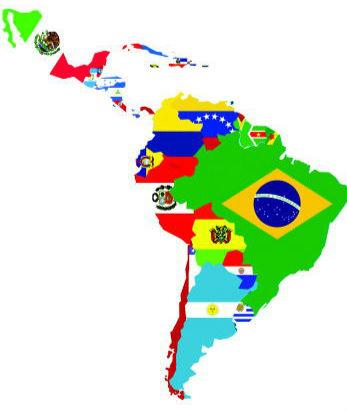MEXICO CITY, April 23 (Xinhua) -- Some just came, and others have ploughed for years. No matter how long they have been present in Latin America, Chinese manufacturers, constructors and service providers are binding into a beneficial force for the continent, nourishing its people.
Business may be profit-oriented, but those from China elevate themselves with a willingness to help empower regional economies, thus harvesting heartfelt acceptance and appraisal, as Xinhua has found through interviews with seven Chinese enterprises operating in six Latin American countries.
COMPUTERS, CARS AND FLIGHTS, ALL ARE MUCH NEEDED PRODUCTIVITY
In the outskirts of Havana, China's international brand of IT facilities Haier has helped Cuba establish its first ever computer-assembling factory.
Since its inauguration in December 2016, over 3,500 laptops and 4,000 tablets have been made and sold to state companies and government agencies.
Its annual production capacity is designed at 12,000 units, a potential impetus to the country's digital endeavor to improve its lowest internet connectivity rate among the world.
"This project will give the country, young people, schools, doctors and other professionals an option of important work tool with good quality, services and properties at an affordable price," local employee Jose Antonio Sanchez told Xinhua in a recent interview.
On March 28, with the sponsorship of the world's fourth richest man, Mexico's magnate Carlos Slim, Chinese automaker JAC Motors unveiled two compact SUVs in Mexico City, which were assembled at its plant in the municipality of Tepeapulco in central state Hidalgo.
With an investment of 230 million U.S. dollars, 10,000 vehicles in five years, 1,000 direct jobs and 4,000 indirect ones are foreseeable in its blueprint.
"We have done a lot of tests in the market for acclimation. Based in Mexico, we strive for size and brand building. With the Mexican base, we are supposed to expand to Central America and the Caribbean," David Zhang, deputy general manager of JAC International, told Xinhua.
On April 11, China Southern Airlines inaugurated a flight connecting China's Guangzhou City with Mexico City, the company's first such flight to Latin America, which Mexico hopes to help boost tourism from China.
"China is an important tourist emitter. In 2016, Mexico received 74,300 (Chinese) visitors, a 33.5 percent rise over 2015, making (China) the second most important Asian market," Salvador Sanchez, Deputy Minister of Tourism of Mexico, told the inauguration ceremony.
TRAINS AND AIR CONDITIONERS, ALL COMFORT COMMON LIVES
CRRC, China's state-owned rolling stock manufacturer, has been providing comprehensive service to Argentina's railway renovation project for the past five years.
Dilapidated railroad system once hampered the third largest economy in Latin America from further development, and even triggered off accidents. This is how CRRC has been accepted as a strategic partner to revive the transportation lifeline, with its advanced equipment, technology and human resource.
In Brazil, Gree, China's largest air conditioner producer, has pulled ahead of its competitors in the market, with energy-efficient technology, updated products and omnipresent service.
As one of the earliest Chinese home appliance producers going overseas, Gree has been in Brazil for 16 years, present in 24 states with over 300 dealers and 500-strong service providers.
Apart from its split systems with inverter design, Gree is famous for energy and environment conservation, winning appraisal from the Brazilian government.
"The job fulfills me," said Andreza Rocha, a local employee of Gree Brazil. "I fit the cultural atmosphere of this enterprise. The senior managers from China are excellent, from whom I have learned a lot."
APARTMENTS AND RESCUE CENTERS, ALL HELP GOVERNMENT MANAGE COUNTRIES
In Peru, Yanjian Group from eastern China's Shandong province has gained strong foothold through eight years of hard work, with new contracts rolling in. Under one contract, Yanjian will build a national emergency response center in Lima.
"With 65-year-long construction experience and consideration of the local demands, we pay much attention to the details of design and building to meet as many requirements as possible," Wang Shuwei, general manager of Yanjian Peru, told Xinhua.
In Ecuador, a lot of people got their lives saved by dialing 911, when the 7.8 magnitude earthquake jolted its north coast on April 16, 2016, killing 673 civilians.
The hot line is handled by the ECU 911 service, which was developed by the China National Electronics Import & Export Corp. (CEIEC), integrating the country's emergency response and rescue services into a single platform.
The project started in 2011 and now there are 16 ECU 911 centers across Ecuador, including two national ones in the capital city of Quito and Guayaquil, its most populous city.
Thanks to CEIEC, "we have great technological contingent, great capacity of our servers, and support and contingency at the electrical and telecommunications levels," Andres Sandoval, national director of ECU 911, told Xinhua on the quake's anniversary.
DIFFICULTIES LIE AHEAD
Though very much determined, the Chinese entities never see Latin America as an easy target.
"There are higher standards in Mexico. Chinese vehicles are late comers to Mexico, later than they entered other markets of Latin America," said David Zhang.
China's IT technology and equipment providers in Cuba needs more support from the Chinese government, just like the U.S. administration helps their providers here, according to Haier.
Upgrading the railway system demands ample financial backing from the Argentine government, which is still fighting a consistent recession, said Fabian Malvillini.
Many Chinese enterprises in Latin America believe there are still great challenges for them to do business in the continent, due to long distance, disparate standards, absent policy backup and financial constraints. But the big market and the local people will keep them staying on, no matter how hard it will be.




 A single purchase
A single purchase









